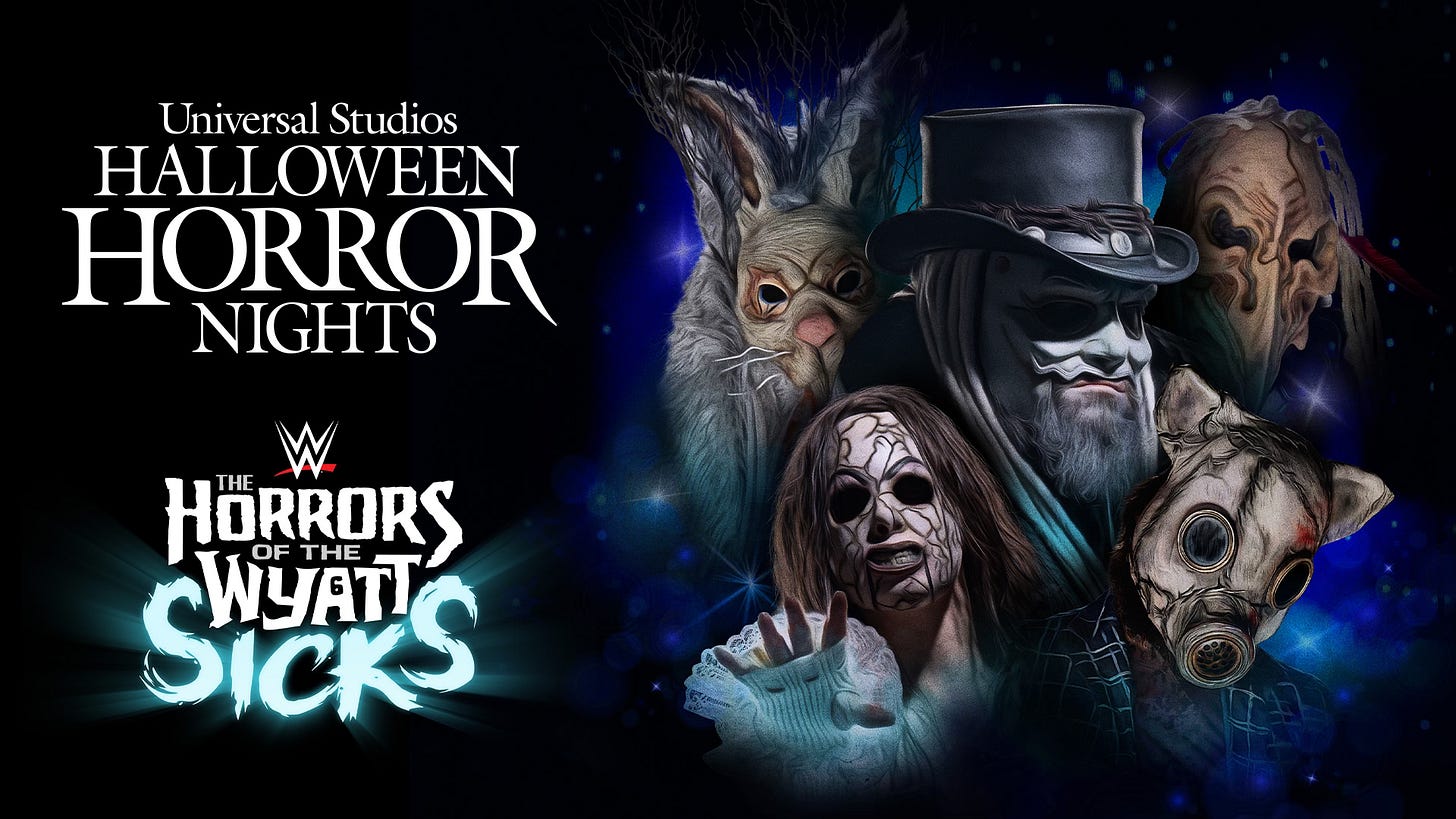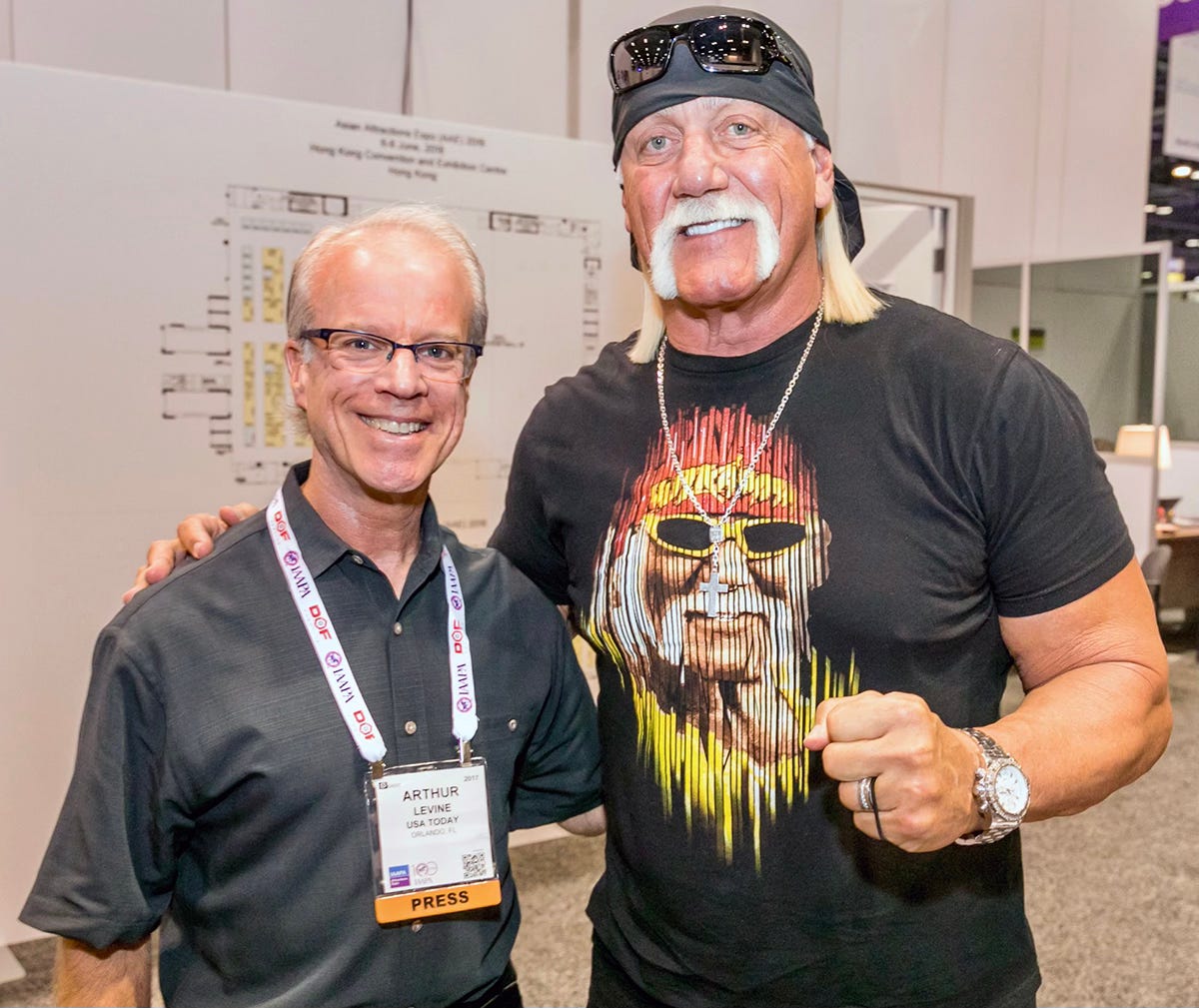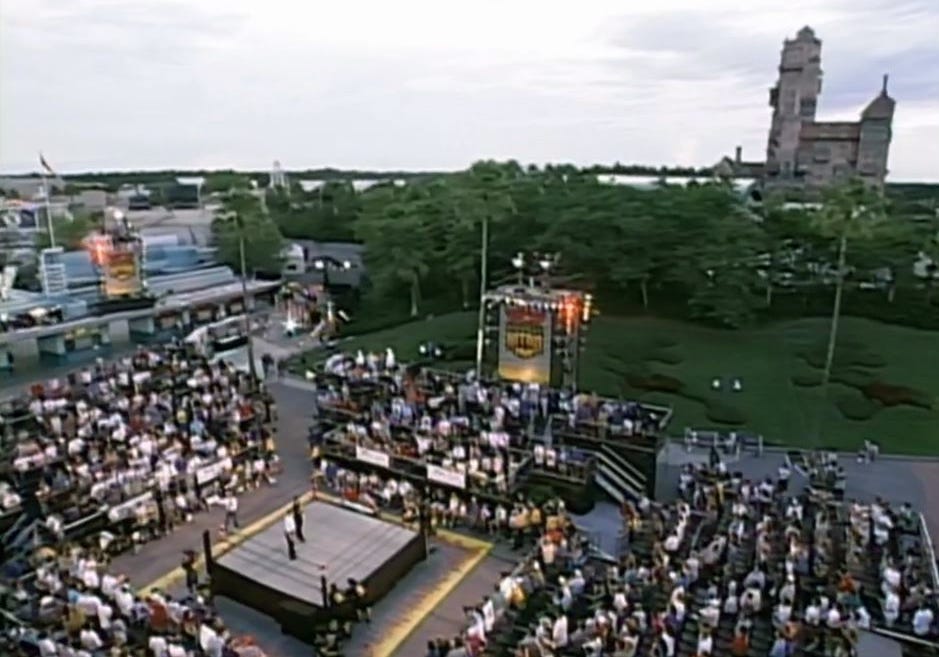The park ‘n’ wrestling connection
Hulk Hogan and Bray Wyatt got me thinking...
Call it arrested development. Maybe it’s some form of Peter Pan syndrome. Whatever it is, there are some things I fell in love with in my younger days, including theme parks and rock and roll, that I adore now. Some more dignified adults may find it a tad odd that a grown-ass man is still playing Jethro Tull songs from the 1970s in a cover band and visiting parks sans kids (where, yes, I gleefully ride Peter Pan’s Flight). Oh, and there’s one more childhood joy in which I still indulge and that some may view as a curious adult peccadillo: I’m a professional wrestling fan.
I can’t say why, exactly, I’ve hung on to these interests. I just know they continue to bring me joy. Can you relate? Clearly, ATP subscribers like you also have a passion for parks and attractions. But I bet many of you still love listening to your scratched-up albums and going to see the rock stars you grew up with perform live–if not perform their songs yourselves. And I’m guessing a smaller, but still significant, number of you get a kick out of the spandex spectacle that is pro wrestling. That’s because there is a thread connecting these seemingly disparate pursuits.
In fact, there was even a name for it: the rock ‘n’ wrestling connection. In the mid-1980s, wrestling titan Vince McMahon helped transform the grappling industry by partnering with the then wildly popular MTV. It started with Cyndi Lauper, whose music video for her hit song, “Girls Just Wanna Have Fun,” featured WWF (which is what the WWE used to be known as) loudmouth manager, Captain Lou Albano. Soon, Lauper began showing up on WWF broadcasts and inserting herself into the storylines. The action migrated over to MTV, somebody coined the term, “rock ‘n’ wrestling connection,” and wrestling went mainstream. Suddenly, it was cool to like wrestling.
It’s not surprising. Wrestlers and promoters have long drawn inspiration from preening rock stars and the pageantry of rock concerts. Likewise, musicians have donned the flashy robes, feather boas, and oversized personalities that are the stock in trade of wrestlers (see: David Lee Roth). There is a natural affinity between the two worlds.
I’d argue there is an affinity between wrestling and theme parks as well. I explored this thesis with none other than Hulk Hogan, the literally larger-than-life wrestling star who recently passed away. The attention he received after his death got me thinking about the parallels between these things I so enjoy. Hogan was at the epicenter of the rock ‘n’ wrestling connection, selling out arenas as the WWF champion and face of the promotion in the 1980s. He was even the star of his own Saturday morning cartoon series on CBS, “Hulk Hogan’s Rock ‘n’ Wrestling.”
I had the opportunity to interview the Hulkster, née Terry Bollea, in 2017 at the IAAPA Expo, the annual gathering for the parks and attractions industry. I was reporting for USA Today at the time and was thrilled to sit down with the wrestling icon. I asked Hogan if he believed there was a park ‘n’ wrestling connection–which he obviously did. He was there to meet with vendors and explore ways to expand Hogan’s Beach Shop, his store in Florida. The wrestler wanted to develop attractions to supplement the retail sales and make visiting his shop more of an immersive experience. So yeah, Hogan was acutely aware of the crossover appeal between theme park and wrestling fans.

In fact, the connection had been established long before I posed the question to Hogan. For example, WWF rival World Championship Wrestling began taping some of its shows at Disney-MGM Studios in the mid-1990s. In 1996, the promotion broadcast its live WCW Monday Nitro show from a makeshift arena set up outdoors at the entrance to the Disney World theme park. Among the performers was Hulk Hogan who shocked the wrestling world that year by turning “heel” (industry parlance for bad-guy villains) and forming the New World Order, or NWO, faction. WCW later shifted some of its tapings over to Universal Orlando. In the 2000s, upstart promotion Impact Wrestling also used a Universal Orlando soundstage to tape its television program. Park guests filled the stands to watch the matches.
Speaking of Universal, it recently announced that one of its featured haunted houses at this year’s Halloween Horror Nights in both Florida and Hollywood will be WWE Presents: The Horrors of The Wyatt Sicks. For the uninitiated, Bray Wyatt was a popular and highly original WWE wrestler whose persona and storylines (which are often just as, if not more important than athleticism in today’s pro wrestling) incorporated elements of horror. Wyatt died in 2023, but his brother carries on the in-ring macabre mayhem as the leader of The Wyatt Sicks. HHNers who brave the house will encounter the strange crew and experience the park ‘n’ wrestling connection firsthand.
In the Venn diagram of theme parks, rock music, and wrestling, where do you fall? Do you believe there is a park ‘n’ wrestling connection?




